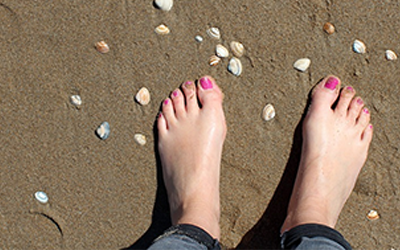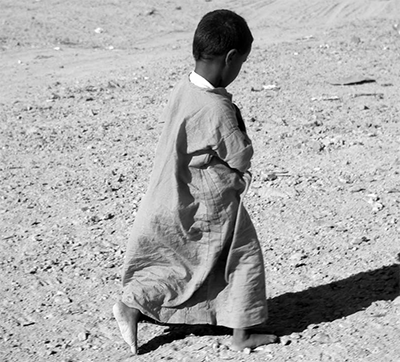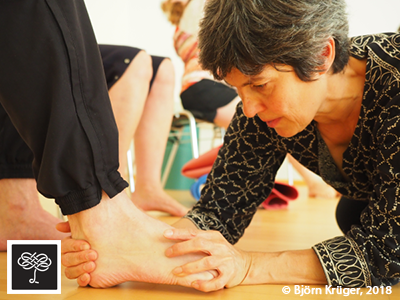The Tale Your Feet Tell
If you lead an active lifestyle, you are probably familiar with buildups of toughened skin, most commonly on your feet. Besides giving your pedicurist a measurable and objective occupation, those leathery, flaky patches of skin tell a tale of how you bear weight in standing, walking, and other activities.

Your feet’s visible signs of buildup and abrasion can give insight into your gait and stance. Photo courtesy Unsplash.
Skin and bones toughen in response to stress. Appropriate stress causes appropriate toughening (strong bones and thick skin), while undue stress causes undue toughness (arthritic spurs in bones, calluses and corns in skin). If we are knowledgeable we can read into our habits by examining our skin and bones.
Take a look at your feet. The most common areas to develop calluses are around the heels, on the inside of the first metatarsophalangeal joint (base of the big toe), and on the inside of the toe’s only joint. There may also be some hardening of the skin at the base of the other toes, where the toes press against each other, and on the outside of the foot.

Calluses can form on many parts of the foot, including sides or bottoms of toes as well as the heel. Photo courtesy Creative Commons.
Each of these thickenings indicates pressure, whether between the floor and your feet, or within your foot. They give you clues on how you might improve your stance and gait.
Calluses on the medial side (inside) of your big toe, whether at the base of the toe or at the distal digit of the toe, are a clue to look for some degree of internal rotation of the leg. Thanks to umbrella strollers, sling-like lawn chairs, mesh-bottomed office chairs, many of us have developed a baseline of internal leg rotation. The pressure at the base of the big toe pushes the entire toe laterally, potentially causing a bunion to form, and creating a cascade of turnout in the neighboring toes.

Calluses on the inside of the big toe can be caused by internal rotation of the legs.
Calluses at the heel are sometimes caused from repeated harsh landings on the heel. If too much skin builds up here, it is common for it to split along painful fissures. Internally, undue stress here can give rise to heel spurs.

Repeated harsh landings on the heel can cause calluses on the heel. Photo courtesy Pixabay (40799).
Corns and calluses at the base of the other toes are sometimes caused by “parking” the weight of the body forward on the feet while standing. The bones and ligaments in the front of the feet are much more delicate than the sturdy human heel. The transverse arch cannot withstand the entire weight of the body in a sustained way; alongside the degradation of the transverse arch, we might develop corns and calluses on the adjoining skin. Walking in a way that bends the foot backwards at every step, unprotected by contraction of strong underfoot muscles, is another action that both destroys the transverse arch of the foot and causes corns and calluses on the skin.

Parking the body's weight forward on the front of the feet can cause calluses at the base of the toes. Photo courtesy Pixabay (Broesis).
How to reverse the problem:
Observe and learn from your corns and calluses. It can be hard to measure pressure under-foot without pressure plates and sophisticated technology, but if you look carefully, you’ll see that your skin is doing that job for you!
Figure out how to improve the stance or action that is causing the problem. Common culprits are poor form in standing and walking. Learn to shift your hips back and counterbalance by hinging your body forward when standing. When walking, leave your heel down longer in every step you take, and learn to grip and grab the ground with your feet as part of your gait.

With enough foot muscle strength and a healthy gait, the foot more or less maintains its shape in all phases of walking. Photo courtesy Pexels (Renato Danyi).
Use hot water soaks and a pumice stone to give yourself a jumpstart in improving the stresses on the soles of your feet. After all, calluses and corns, once formed, can cause further pressure on the underlying tissues, perpetuating the problem.

The Gokhale Method Foundations Course incorporates direct work with the feet, and your teacher can discuss in detail some of the lifestyle clues that can be gleaned from your feet.
Have you had problems with corns and calluses? What have you done about them? Are you inspired to try a modified stance? Please share your stories!

Comments
Hi Esther,Thank you for this
Hi Esther,
Thank you for this post! I feel it is such an important one and will be helpful for me but I need a clarification on the section #1 (Calluses on the Inside of the Big Toe). Could you just restate that for me - perhaps without using the medical terms distal, medial and so on? By "inside" I don't know if you mean inside as in toward the inside thigh, in-between the legs or inside of the foot so maybe in-between the big toe and the next one. I'm sorry to have to ask but I really want to understand this and those medical terms confuse me. Thanks!
Thanks for asking - there are
Thanks for asking - there are probably others who are similarly confused.
Medial=inside=towards the body's midline (that slices the standing body into left and right halves)
Lateral=outside=away from the body's midline
Note: the "standard anatomical position," which is what all these directions are based on, is an upright standing position, feet flat on the ground facing forward, arms by the side of the body with palms facing forward.
Hello Esther, In the last
Hello Esther,
In the last year I have noticed that the beginning of bunions developing, especially on the left side. What do bunions say about our posture, and what can we do to prevent it?
Thank you,
Sophie
I have had a bunion on my
I have had a bunion on my right foot for 30+ years. Presently, It is at a dorment stage, but when it flares up, it is painful. Since I am a daily walker for exercise, the bunion flare-ups inhibit my lifestyle. I will be very interested to read Esther's comment regarding posture and bunion formation. Wishing everyone a New Year filled with Joy and Peace.
Candace
Sorry to hear about your
Sorry to hear about your bunions. The good news is that there's a lot you can do to help the situation.
I've seen some dramatic changes, including where it's difficult to see any residual traces of pretty prominent bunions. Chew on one piece of this at a time or, best, get some coachng from one of our qualified teachers.
Add New Comment
Login to add commment
Login